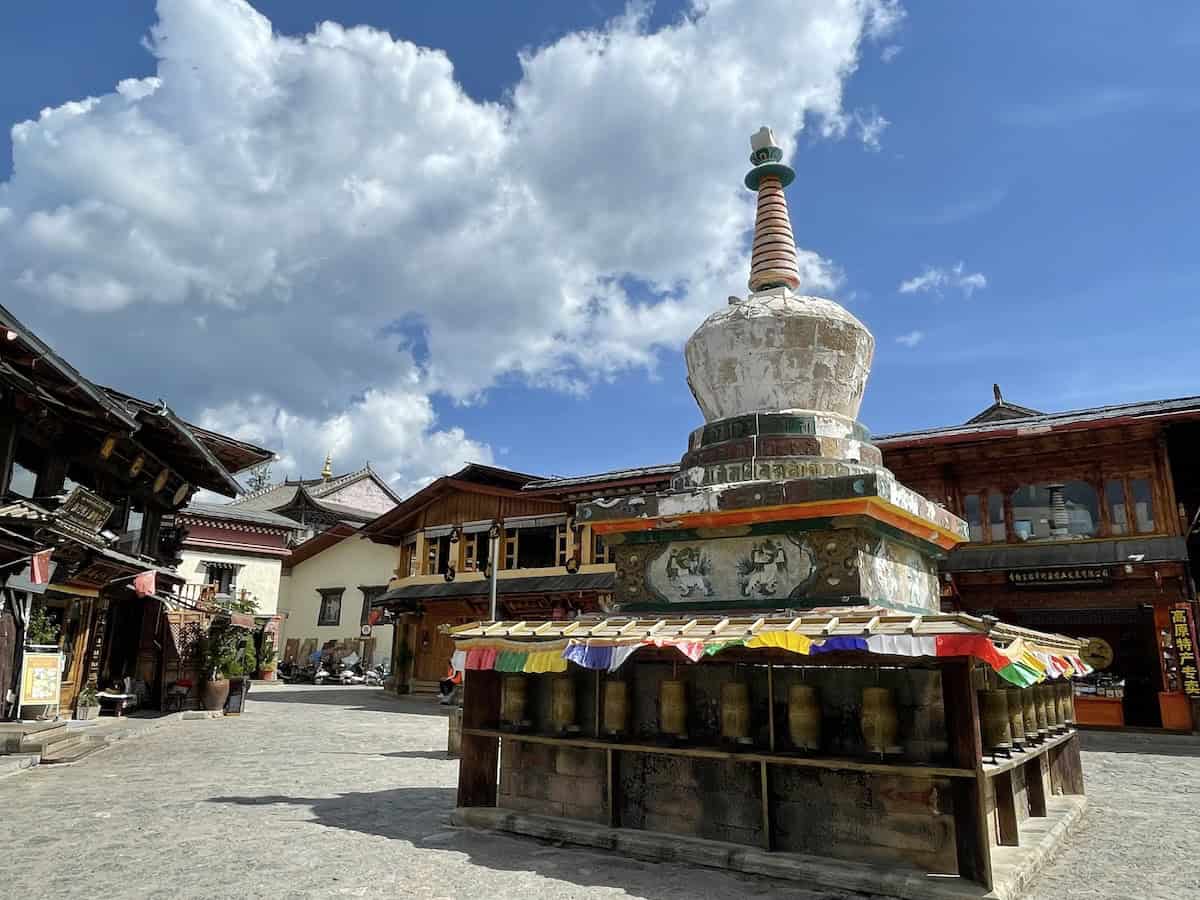According to the legends, Shangri-La is a green Himalayan paradise. A mystical Buddhist haven where people never age. A peaceful, magical utopia where everything is wonderful all the time.
The real Shangri-La is not like this. It might not be a Buddhist utopia, but it is a very nice place to experience Tibetan culture without going to Tibet. It was also probably the place I was most excited about when we were planning our trip to Yunnan.
Unfortunately, it also ended up being the most disappointing. Not because I expected magical valleys full of ageless monks. It was because I spent nearly the whole time laying in the hotel room, nauseous with altitude sickness.
The Story of the Real Shangri-La
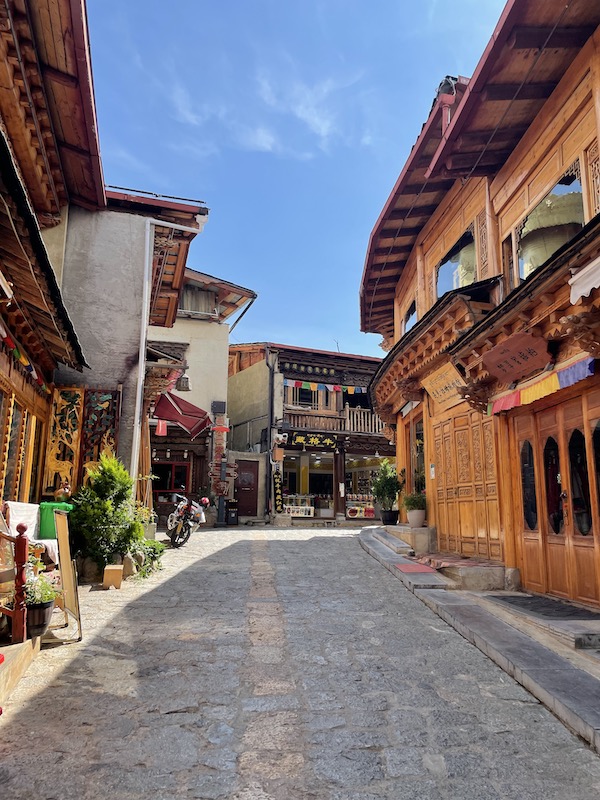
The real Shangri-La is located way up in Yunnan’s far Northwestern edge, in a strip of land between the borders of Sichuan Province and Tibet. Most of the people, food, architecture, and culture are Tibetan. It’s basically as close to Tibet as you can get without actually going to Tibet. Shangri-La makes for a nice alternative since visiting the real Tibet requires a tour guide and a bunch of permits.
You can fly into Shangri-La or take a three-hour bus from Lijiang. A high-speed rail line is currently under construction, but who knows when it’ll be active. They’ve been claiming it’ll open ‘next year’ for the past half a decade. However, the bus is comfortable and the highway is smooth and well-paved. Just make sure you pee before you get on. There’s only one bathroom break and it’s near the end of the trip.
And of course, Shangri-La wasn’t always named Shangri-La. It used to be called Zhongdian, and it’s the capital of the Deqin Tibetan Autonomous Prefecture. They changed the name to Shangri-La in 2001 to encourage tourism.
Visiting Shangri-La
Shangri-La, FKA Zhongdian, has so many magnificent tourist attractions, they might not have needed to change the name. You can wander the old town and soak up the Tibetan architecture, visit nearby natural sights like mountains, alpine lakes, and meadows, and even visit an authentic Tibetan Buddhist lamasery. I did not get to visit any of those things.
We arrived on the bus, and at first, I was blown away by how different Shangri-La was from even nearby Lijiang. It felt like stepping into a National Geographic picture of a Tibetan village. The old town was full of cool, old wooden buildings and shops that had a much more authentic feel than you find in other Chinese old towns. We wandered around for a few hours, ate some yak meat, and went back to the hotel.
Then I got sick.
Altitude Sickness Sucks
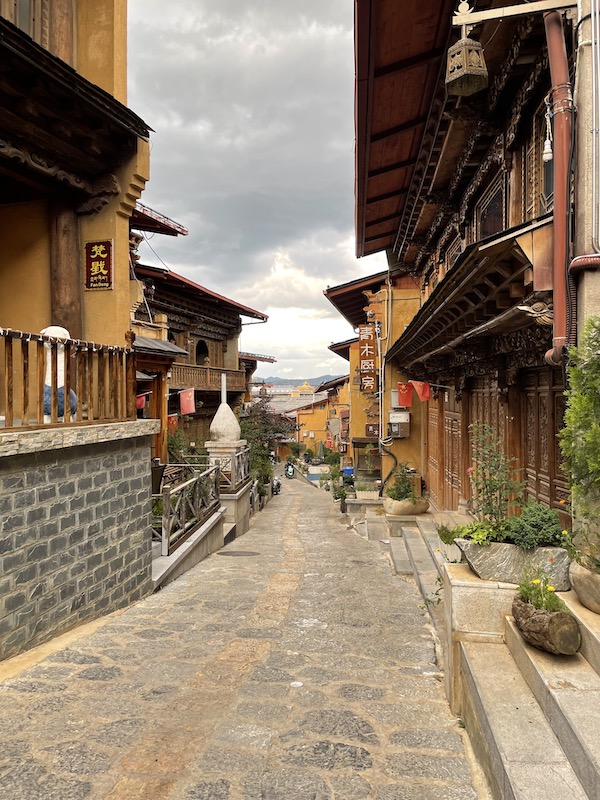
The altitude sickness hit me suddenly, like a slap in the face or maybe a fast avalanche. I could almost tick off all the symptoms from WebMD. My head ached. I felt dizzy and nauseous. I was fatigued and had no energy. The worst, though, was the shortness of breath. No matter how deeply I inhaled, I could never get enough air. I felt like a goldfish laying just outside the bowl, gasping desperately for breath.
It was miserable. It might have been the most miserable I’ve ever felt.
Thankfully, almost every little store in Shangri-La sells oxygen canisters, so we went and bought a few canisters. They helped for a few minutes, but the altitude sickness would creep back. I ended up spending most of my time in Shangri-La lying in bed and watching that old Lemony Snicket movie starring Jim Carrey.
They say that altitude sickness usually resolves itself with a few days of rest. Unfortunately, we had a plane to catch and didn’t want to spend our precious vacation time laying in our hotel room watching old kids’ movies. We decided to cut things short and return to Lijiang the next day. So much for the wonders of Shangri-La.
Why Doesn’t Anyone Tell You About Altitude Sickness in Shangri-La?
Of course, Shangri-La can’t really help that it’s at a high altitude. I don’t blame Shangri-La. I blame the hundreds of websites and tourist information places that never once mention it. Never once did I read on any guides or websites that Shangri-La is high enough to cause altitude sickness. Why not?
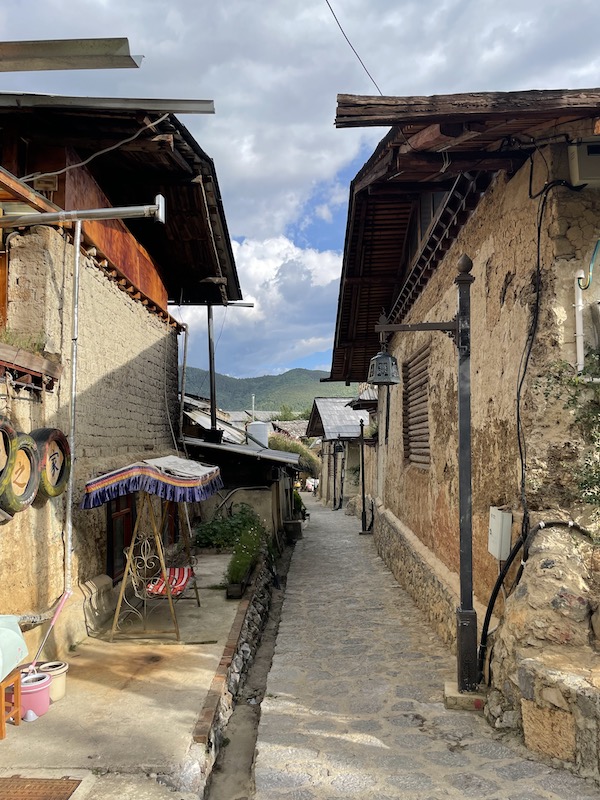
Shangri-La is 3,400 meters (11,000 feet) above sea level. That’s pretty damn high.
By comparison, Cusco in Peru is also about 3,400 meters above sea level, around the same height as Shangri-La. And guess what? They warn you about it. There are all sorts of websites and guidebooks warning people about the altitude in Cusco. I’ve even heard that some of the more high-end hotels in Cusco pump oxygen into the rooms to help their guests avoid altitude sickness.
Instead, the altitude in Shangri-La doesn’t even get a mention. It sneaks up on you with no warning.
So, dear internet, consider this post your official warning: Shangri-La is at a very high altitude. You can get altitude sickness in Shangri-La. It happened to me.
Altitude sickness is at best, miserable. At worst, it can kill you. Should you still visit? I think so. Just remember, it’s at roughly the same altitude as Cusco. Take the same precautions and preparations as you would there. Otherwise, instead of exploring a mystical Buddhist mountains, you might spend your entire trip like me: laying in bed feeling nauseous and out of breath in your hotel.
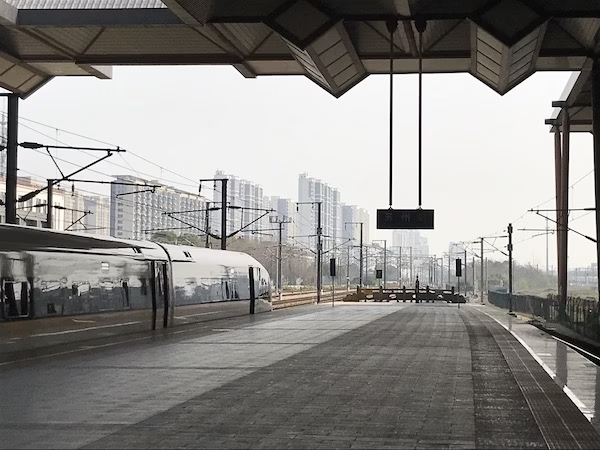
Need Train Tickets in China?
China’s high speed rail network is fast and efficient, but it’s difficult for non-Chinese citizens to get tickets. Fortunately, Trip.com makes buying train tickets as hassle free as traveling through China can possibly be. Click the link below to get your Chinese train tickets. If you buy your train tickets using the link, I’ll receive a small commission and you’ll feel good knowing you’ve helped out an independent blogger.
Popular Activities in Shangri-La
If you can handle the heights, the following are examples of some of the many tours and activities available in Shangri-la. Click on one of the links below to book your tour and this website will receive a small commission. You’ll get your tour at no extra cost and the additional satisfaction of supporting an independent travel blog!

